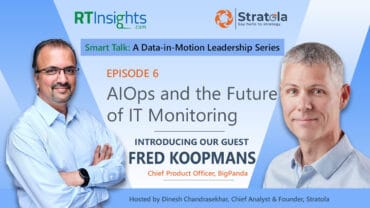
Doing an IoT project for the sake of it isn’t enough. The latest Capgemini report casts some light on why so many IoT projects fail in the pilot stage.
The Internet of Things may be all about having lots of “things” connected to your business in some fashion, but “things” don’t deliver revenue by themselves. It’s what you do with the information and capabilities IoT offers that ultimately matters.
A new report from Capgemini states that several challenges – lack of a clear business case, security concerns, constrained analytical capabilities and uncertainty about IoT standards and protocols – are limiting organizational ability to realize value from their IoT investments.
The study’s authors surveyed senior executives from more than 300 organizations who are already implementing IoT initiatives, as well as analyzing more than 300 cross-sector, real-life IoT uses cases used for internal operations spanning industrial manufacturing, retail, consumer products, energy & utilities, automotive and telecommunications, to identify which ones have the greatest impact.
“At many organizations, IoT initiatives designed to optimize operations do not achieve their goals or reach meaningful scale,” the study’s authors observe. “We found that more than six out of ten organizations have failed to take operational IoT initiatives past proof-of-concept stage or beyond implementation at one or two sites.”
Reasons why they fail in pilot stage
The Capgemini report cites a number of reasons why the IoT promise is failing to turn into reality:
- No clear business case: Around 50% of organizations struggle to establish a clear business case for their investments.
- Security concerns: 62% of organizations are grappling with cyber risks that pose significant reputational and financial consequences.
- Constrained analytical capabilities: 60% of organizations say they do not have the analytics capabilities — including talent — to take advantage of the data generated from IoT sources.
- Uncertainty about IoT standards and protocols: At least 57% of organizations say uncertain standards are a significant challenge.
- Lack of technological infrastructure readiness. A majority, 53%, simply do not have the systems and software in place to handle IoT.
The Capgemini researchers identified a group of organizations that were able to take 50% or more of IoT use cases from pilot to scale. Totaling eight percent of surveyed enterprises, these “bellwethers” deliver above-average benefits compared to the rest of the sample, in areas from revenue performance to productivity. For example, 68% saw more than average benefits in efficiency, versus 21% of the less-developed IoT companies. In addition, 64% of the bellwether companies saw more-than-average benefits in cost reduction, versus 29% of their lagging counterparts. Fifty-seven percent also report higher-than-average benefits in revenues, versus 33% of the less-advanced companies.
What’s needed to tackle the problem
The report’s authors recommend attacking the problem from three directions:
- “Create a clear and compelling picture of how the IoT can tackle critical problems.”
- “Put together a leadership team that has both business and technology acumen, allowing you to devise a coherent IoT strategy and navigate the organization through the changes required.”
- “Drive scale by focusing on a tightly defined group of high-potential use cases, moving quickly to enterprise-wide adoption.”
The goal of IoT is to open up new business opportunities, either through real-time performance monitoring of assets or delivering services to the endpoints. Organizations need to be ready to build and invest as they embrace IoT, and be open to innovation that could change the courses of their businesses.




























